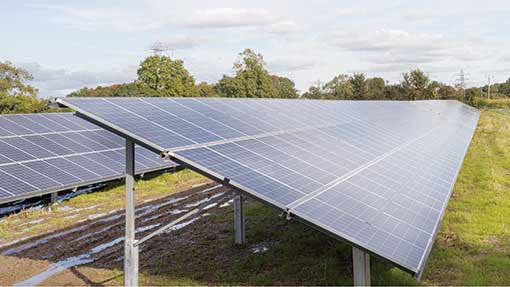Take care when choosing a solar developer

There are no professional standards which solar developers need to follow – the poorer the deal for the farmer, the more money the solar developer will make.
While we have come across some very professional solar developers who are prepared to offer farmers good terms for lease agreements, many are simply salesmen looking to find a vulnerable farmer for their financiers.
Every solar farm heads of terms should include the following:
- Length of lease (typically 26 years)
- Lease to remain outside the right to review clause of the Landlord and Tenant Act 1954.
- Lease to limit the tenant to only producing electricity from harvesting the sun by solar pv.
- The landlord (the farmer) should be compensated for the loss of crop and single payment in the year of construction. With the change in SPS, protection is also needed to cover entitlements being confiscated if construction is between 2014 and 2015.
- Subletting only allowed with the landlord’s written permission.
- Right for the funder to take over the tenant’s obligations (safeguards landlord’s position if tenant goes out of business or cannot otherwise meet obligations).
- Tenant (solar company) to pay business rates, community infrastructure levy, Section 106 payments, water rates.
- Tenant to take out a robust insurance policy for public liability and consequential loss and make this available to the landlord.
- Clear up bonds – must be in place from the start of the scheme all the way to the end of the lease in case the tenant defaults. These cover restoration of land to the condition it was in prior to construction. They must include land drainage, soil structure reinstatement, repair to farm tracks and removing the kit (see below).
- Basic rent ranges across the country but is typically £1,200/acre a year on the south-west peninsula to £1,000/acre a year in Lincolnshire. Rents should be index-linked and should be the higher of basic rent, or £5,000/MW installed or 5% harvesting rent. Harvesting rent is 5% of all the income from ROCS, LECS and electricity sales. The latter is indexed in part to
electricity prices.
- The landowner’s legal and agents’ fees should be paid in full by the solar developer. If your site is developed, at least five separate legal agreements need to be entered into – you should budget between £10,000 and £15,000 for these various agreements:
1 The option
2 The lease
3 The freehold transfer of the substation to the electricity network company
4 The funder’s direct agreement
5 Section 106 planning agreement.
6 Potential multiple changes of tenant
- Panels should be constructed so they are 800mm high to allow sheep grazing underneath.
- Security fence should be located at least 5m from perimeter hedge/ditch to allow for hedgecutting and ditching.
- Design layouts must take into account major land drains to prevent flooding on adjoining farmland.
- Farmers must also consider their access through the lease area to retained land and water supply for sheep.
- Often solar farms are constructed in wet winter conditions. The separating of subsoil from topsoil where any digging is carried out for the cable trenches must be a requirement of the lease.
- After construction it is best to keep ongoing management of the agricultural land under solar panels in hand for the benefit of the landowner. This is usually through sheep grazing. Weed control and reinstatement costs should be the responsibility of the solar farm developer.
Clear up bonds
- These are very important – solar developers are building solar farms under newly set up Special Purpose Vehicle limited companies whose only asset is your solar farm.
- The tenant does not own the panels in the early years of construction as these will be owned by a lease company.
- Clear up bonds should be reviewed every five years (with the ability to refer to an independent expert for a binding decision) as no-one knows how much haulage, labour and disposal will cost in 26 years’ time.
- They should be held in an Escrow account (controlled by an independent third party) or deposited in a third party UK bank account.
- Can be drawn down at any time if the lease ends – to do either the whole clear-up or to finish unsatisfactory work.
George Paton has negotiated many solar heads of terms on behalf of farmers, including the UK’s largest solar farm under construction – a 41MW site at Didcot in Oxfordshire.
(For more on renewable energy see our Farm Energy page)
